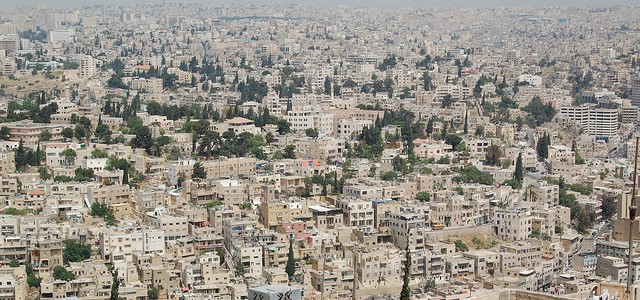Thus, the goal of IWRM is to address the various trade-offs among water users:
agriculture, industry, household, and ecosystems.
Objectives and Expected Results
The main objective of the IUWM capacity building programme is to enhance the capacity of stakeholders at national and especially at city level to plan for and operationalize integrated urban water management processes in order to optimize social equity, financial efficiency, and environmental sustainability. The IUWM approach advocates for the integration of many aspects pertaining to water security which are traditionally dealt with in silos. IUWM training aims to raise awareness and build capacity for planners and policy makers on the following set of areas which need to be integrated:
- Institutional integration – the involvement of key stakeholders coming from different spheres of government: regional, national and, sub-national, local levels, as well as from water utilities, domestic users, the private sector, land owners, urban planners and developers (at the local and catchment levels), universities, and research institutes.
- Social integration – involving both men, women, and youth as well as traditionally marginalized groups. Special attention needs to be drawn to populations of urban slums and poorer neighborhoods.
- Geographical integration – bringing in context the areas beyond the administrative borders of a given community or municipality and taking into consideration that the quantity and quality of water can be influenced by upstream availability of natural resources and by ongoing human activities, and at the same time impact on other cities downstream.
- Water integration – considering the whole urban water cycle as one system and aiming for water security with the optimum use of all potential sources of water, including use of storm water potential, use or reuse of waste water; greater application of natural systems for water and wastewater treatment; building resilience of urban water systems to global change pressures.
- Inter sectoral integration – tying together the various sectors that have interest in water: water supply, sanitation, waste water, drainage, environmental health, urban agriculture, landscape management, energy production, ecosystems protection and preservation, industrial activities, fluvial transport, fishing, recreational activities, and domestic use.
- Governance integration – establishing partnerships between the public (at the national, regional and city level), private, and social sectors, while seeking an optimum balance between centralized and decentralized systems that can contribute to improve urban water security.
Scope
The IUWM toolkit training was delivered in different regions of the developing world where the potential for IUWM is recognized to be large. Workshops were delivered in several countries of Africa including Ivory Coast, Zimbabwe, and South Africa and trained planners and academics from Asian and Central Asian countries such as Mongolia, India, Kazakhstan, Afghanistan, Kyrgyzstan, Tajikistan, and Uzbekistan.
Partners
GWP has developed relationships with various key organizations that are working on urban and waste water resources with whom a dialogue for cooperation at various levels can be engaged. The capacity building initiative is implemented in collaboration with a range of partners:
- African Development Bank through the Africa Water Facility (AWF);
- International Council for Local Environmental Initiatives (ICLEI);
- African Water Association (AfWA);
- International Water Management Institute (IWMI);
- GWOP;
- UN-Habitat;
- SIWI;
- ICLEI;
- Cap-Net;
- WMO;
- WATER AID;
- International Institute for Water & Environment Engineering
The training modules and manuals were developed in collaboration with the Patel College of Global Sustainability of the University of South Florida (USF) and the Water Partnership Program (WPP) of the World Bank. Further cooperation is being explored with the World Meteorological Organization and the World Bank in developing urban flood management modules.
Target Audience
The IUWM training is designed for policy makers at the city level but also towards regional, national, sub-national, and local officials who deal with urban water management. It is hoped that capacity building activities will be extended to water utilities, domestic users, the private sector, land owners and developers (at the local and catchment levels), universities, and research institutes.
Delivery Methods
The IUWM capacity building component is based on a toolkit that looks at technical, social, and economic aspects of urban water management. The training focuses on applying these tools for urban areas and understanding the manner in which they interact with each other. A tool on finance and another on urban flood management are in the process of being developed. Each tool is presented in the form of reference documents, powerpoints, or software; GWP is planning with Cap-Net to make them accessible online. The training normally starts with the introductory IUWM module which lays out the basic principles of this resource management vision, and is then complemented with the five thematic tools below:
- Introductory tool – providing an overview of what is the IWUM approach together with a description of several case studies.
- Diagnostic Tool – aims to analyse existing urban water management situation in cities and identifies challenges that affect performance of the system.
- Water Balance Tool – aims to model and asses water flows based on multiple and alternative service delivery strategies for successful IUWM.
- Technology Selection Tool – consists of i) a comprehensive catalogue of technologies for the entire urban water cycle and ii) a decision-support database to search and select potential technologies suitable for local conditions.
- Stakeholder Engagement Tool – guidance is structured according to the different phases of the stakeholder process and it will provide: i) an overview of the objectives and expectations; ii) guidance on the start of the stakeholder process; iii) a description of the main steps of the stakeholder process; and iv) guidance on the finalization of stakeholder engagement processes.
- Institutional Mapping Tool – formulate and introduce principal typologies of water governance.

